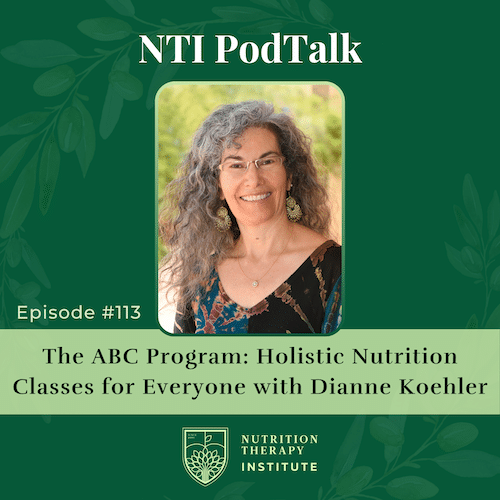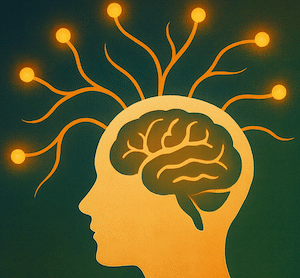
Share this post!
This is the first part of a four-part series about how to cycle sync to improve menstrual issues. This series teaches you what to eat to promote optimal hormonal balance and alleviate menstrual cycle symptoms. Each section is dedicated to one of the four cycle phases (see below) and uses a seasonal metaphor to highlight the types of foods to eat and the overall tone of each phase:
- Part 1: Follicular Phase (Spring): Get Out There!
- Part 2: Ovulatory Phase (Summer): Time to Shine
- Part 3: Luteal Phase (Autumn): Slow Down and Self-Care
- Part 4: Menstrual Phase (Winter): Rest and Reflect
You’ll also learn what your hormones and body are doing throughout your cycle, symptoms to look out for, signs that your hormones are balanced, and what nutrients support each phase.
Most importantly, you’ll walk away with the knowledge you need to reclaim your menstrual health in a safe, natural, healthy, (and yummy!) way. The hormonal changes that happen throughout your menstrual cycle have far-reaching effects, from your sex drive to your sleep quality, energy levels, and mood. In a nutshell, better periods equal better health, so it’s vital we understand how our bodies work and how best to support them.
Why You Need to Know About Cycle Syncing
If you’re a person who menstruates, there’s a pretty good chance you’ve experienced menstrual cycle symptoms. Do any of these feel familiar?
- Mood swings
- Irregular cycles
- Breast tenderness
- Cramps
- Heavy periods
- Headaches/migraines
- Acne
- Food cravings
- Irritability
- Bloating
- Constipation/diarrhea
- Fatigue
If so, you’re not alone. Though this list is not exhaustive, it’s an example of some common issues that people with periods can encounter throughout their menstrual cycle.
However, just because you menstruate doesn’t mean you’re destined to suffer. Although conventional medicine often depicts these symptoms as inevitable, I’m here to tell you that painless periods and symptom-free cycles are possible (no, I’m not kidding!). The key is to address the underlying cause: hormonal imbalance. When our hormones are out of whack, this imbalance can have cascading effects in the body, causing the unpleasant symptoms you may experience each month.1,2

Though the standard approach is to use “the pill” to tackle these problems, this medication only masks symptoms and can cause numerous side effects, such as weight gain, depression, low libido, gut issues etc. 1,2 Cycle Syncing, on the other hand, provides a natural alternative that addresses the root cause of menstrual issues (hormonal imbalance) by working with the normal rhythms of the menstrual cycle. 1,2
So, if you’re sick and tired of feeling crappy every month and are looking for natural solutions, you’re in the right place. Read on to learn more about hormonal health and find out how to address these common (though not normal!) menstrual cycle symptoms.
Cycle Syncing
So, what is cycle syncing and how does it help people have better periods?
The cycle syncing method works with the four phases of the menstrual cycle (follicular, ovulatory, luteal, and menstrual) to achieve hormonal balance, which not only helps alleviate common symptoms associated with menstruation, but actually optimizes overall hormonal health. Grounded in functional nutrition, cycle syncing recognizes the normal fluctuation of hormones throughout the menstrual cycle and recommends diet, exercise, and lifestyle changes to support these natural rhythms. 1,2
Often, the focus ends up being on different types of workouts for each cycle phase; however, this blog series gets back to basics and highlights the importance of nourishing foods to create happy hormones (that’s right: what we eat not only determines our body’s ability to make hormones, but the right amount too!).
A quick note about birth control…
If you’re on hormonal birth control, you can still follow the cycle-syncing method. Though hormonal contraception prevents many of the biological processes that occur with each cycle phase, you will still benefit from eating a wide variety of organic whole foods, eliminating inflammatory ingredients, and following other recommended exercise and lifestyle choices. Check out Alisa Vitti’s books WomanCode or In the Flo on how to cycle sync while taking hormonal birth control.
A quick note about hormonal conditions…
If you’ve been medically diagnosed with an issue such as polycystic ovarian syndrome (PCOS), endometriosis, amenorrhea (missing periods), uterine fibroids, premenstrual dysphoric disorder (PMDD), infertility, or other hormonal condition, some foundational work is required before you can start cycle syncing. Consider working with a holistic nutrition therapist and/or functional medicine practitioner for support with these concerns.
Key Takeaways
- Menstrual cycle symptoms are caused by hormonal imbalance
- “The pill” masks symptoms rather than addressing their root cause and can have unwanted side effects
- Menstrual cycle symptoms are common, but not normal or inevitable!
- Cycle Syncing is a natural way to address hormonal imbalance and alleviate menstrual symptoms
If you’re ready for symptom-free cycles and painless periods, let’s get started!
Part One: Follicular Phase (Spring) – Get Out There!

Although your OBGYN will tell you your menstrual cycle officially starts on day one of your period, I like to begin with the follicular phase, which happens directly after your bleed. For me, this makes more intuitive sense. Menstruation, like winter, is a time of quiet and deep rest, whereas the follicular phase signals the return of energy to the body, like spring signals the return of life to the earth. All this to say, the follicular phase is a great place to get started, so let’s go!
First Things First: Your Hormone Superstars
To understand how your cycle works, you need to understand the key players that structure your four phases: your reproductive hormones.
The changes in these hormones throughout your menstrual cycle work to create the four unique phases that comprise your cycle from start to finish (follicular, ovulatory, luteal, and menstrual). 1,2 These hormonal fluctuations not only impact your reproductive function, they determine how you feel both physically and emotionally throughout your cycle, so it’s vital we know how to support them!
There are five key hormones that dictate how you experience your menstrual cycle:
- Estrogen
- Progesterone
- Follicle-stimulating hormone (FSH)
- Luteinizing hormone (LH)
- Testosterone
Estrogen is your cycle VIP, participating in ovulation and thickening your uterine lining in preparation for pregnancy. (Fun fact: estrogen is also essential to brain, bone, and cardiovascular health! It’s also responsible for our secondary sex characteristics. Think: breasts, pubic hair, and voluptuous hips and thighs). 1,2
Progesterone kicks in around ovulation to maintain the uterine lining. If pregnancy doesn’t occur, this hormone decreases, which triggers your period. Progesterone is a natural counterbalance to estrogen and supports sleep, relaxation, and mood. (Surprised? More on this later!). 1,2
Then we have FSH and LH. FSH stimulates ovarian follicles (fluid-filled sacs that house your eggs) to mature and LH triggers the release of an egg from a mature follicle into one of your fallopian tubes (otherwise known as ovulation). Testosterone surges around this time to increase your sex drive (woot!), enhancing the chances of conception. 1,2
Now that you know what your hormones are up to, let’s dive into your follicular phase.
What Your Body is Doing

The follicular phase takes place directly after menstruation and leads up to ovulation. During this part of your cycle, your hormone levels are beginning to build after dropping to their lowest concentrations during your period. Your pituitary gland begins to send follicle-stimulating hormone (FSH) to your ovaries, which signals several follicles to swell in preparation to release an egg. Estrogen levels increase to thicken your uterine lining so it can house a fertilized egg later in your cycle. The follicular phase typically lasts from 7 to 10 days. 1,2
So, what does all this mean from a physical and emotional standpoint? Generally speaking, this part of the menstrual cycle isn’t associated with cycle symptoms, but rather boasts increased energy levels, mental focus, and creativity.
The rising levels of estrogen leading up to ovulation enhance connections in your brain, which promote mental sharpness, communication, and creative thinking. Elevated estrogen also increases the release of serotonin (known as the happiness neurotransmitter), which means you’re more likely to feel social, positive, and excited about new experiences. 1,2
Much like springtime, the follicular phase is characterized as a time of beginnings. Emotionally, you’ll feel more outgoing and upbeat, so it’s a good time to get out there and try something new. Think: coming out of a long winter feeling revitalized by the growing energy, sunlight, and potential that spring offers each year. This momentum continues to build towards ovulation (summer), then starts to wane with the luteal phase (autumn), and dies down with menstruation (winter), giving the body a much-needed rest (but we’ll get into all of that later!).
Cycle Symptoms
Although the follicular phase is typically not associated with overt symptoms, hormonal imbalance during this part of your cycle can cause you to overdo it. This might look like pulling all-nighters at work, taking on too many projects, over-committing your social schedule, and increased stress and anxiety. 1,2
Cycling Syncing Your Diet
Before we jump into follicular phase foods, it’s important to understand how cycling syncing your diet works to support your cycle (i.e., eating different foods during different cycle phases).
The recommended foods for each cycle phase have a twofold function: they provide your body with the nutrients it needs in the current phase AND set you up for hormonal balance in the phase that follows. Because your cycle flows from one phase to the next, each phase influences the other, so the foods you eat have cascading effects throughout your entire menstrual cycle (pretty cool, right?!). 1,2
This snowball effect makes cycle syncing a very efficient way to address the entirety of your menstrual issues rather than coming at them piecemeal (on the not-so-awesome flip side, this also means that hormone-disrupting foods [ahem, sugar and caffeine] can cause issues in both your current cycle phase and down the line). In short, hormonal balance in one cycle phase sets you up for hormonal balance in the next; likewise, hormonal imbalance in one phase can cause hormonal imbalance throughout your cycle. This is one very good reason to eat foods that support each cycle phase.
Another reason to cycle sync your foods is that your body requires different micronutrients during each phase. Your hormone ratios change, your ovaries and uterus engage in different functions, and your body’s micronutrient needs vary as a result. Remember: your body isn’t the same every day, so your diet shouldn’t be either (plus, variety is the spice of life!). 1,2
Finally, the hormonal balance you achieve from cycle syncing makes you feel amazing! When the body is operating the way it should, you have more energy, feel good in your body, and can show up as your best self.
So let’s get to it!
Core Nutrients & Power Foods

Follicular phase foods are fresh, vibrant, and light (think: “inner spring”), which will make you feel more energized as your hormone levels begin to rise. During the first half of your cycle (your follicular and ovulatory phases), the increase in estrogen tends to suppress your appetite and your metabolism slows down. As a result, the body favors lighter foods such as lean protein (chicken, trout), lots of veggies (string beans, carrots, zucchini, lettuce), sprouted beans and seeds, and energy-sustaining grains (oats). 1,2
Many of the recommended foods naturally contain phytoestrogens, which are plant-based compounds that mimic your body’s natural estrogen. Though you wouldn’t want to emphasize these foods when your estrogen levels are high (e.g., ovulation), during this phase when estrogen is lower, phytoestrogens can be balancing and beneficial. 1,2
You’ll also want to focus on probiotic-rich foods, such as kimchi and sauerkraut, which help the microbiome (gut bacteria) break down estrogen. By eating fermented foods in the follicular phase, you’re prepping your gut to efficiently metabolize estrogen during ovulation when hormone levels are higher. 1,2
Key Takeaways
- There are five key reproductive hormones: estrogen, progesterone, follicle-stimulating hormone (FSH), luteinizing hormone (LH), and testosterone
- Your follicular phase takes place after menstruation and before ovulation; it’s your “inner spring”
- Your hormone levels are beginning to rise, which increases energy, mental focus, and creativity
- Follicular phase foods are fresh, vibrant, and light
- The rise in estrogen decreases appetite and your metabolism slows down
- Cycle syncing meets the nutritional needs of each phase, has cascading effects, and makes you feel amazing!
Resources & Recipes for Cycle Syncing
For a complete list of follicular-supporting foods, check out Alisa Vitti’s books WomanCode or In the Flo.
I also recommend getting a period tracking app (there are many out there) so you know which cycle phase you’re in. If you want to take things further, check out the Inito device, which tracks your reproductive hormones in real-time (it’s awesome!). If your hormones are super out of whack, firstly, I feel you – hang in there – and secondly, consider working with a holistic nutrition therapist and/or functional medicine practitioner for more in-depth support.
Follicular-friendly Recipes
- Tangy Probiotic Sauerkraut
- One-pan Moroccan Chicken with Olives and Apricots
- Roasted Vegetable Soup with Homemade Beans
- Summer Squash, Spinach, and Leek Frittata
Related Articles
- Eating to Support Your Cycle
- Nutritional Support for Endometriosis
- Holistic Nutrition for PCOS
- Love Your Fertility with these Preconception Nutrients
Related Listening
Up Next
Ready to learn more? In part 2 of this series, we’ll dive into your ovulatory phase, aka the “summer” of your cycle. In this blog, you’ll get acquainted with your boosted sex drive, ample energy, and feel-good vibes. If you experience cycle symptoms during this phase, don’t worry, we’ll tackle those too.
About the author: Jennifer Gartner is a certified Nutrition Therapist Master and specializes in nutritional endocrinology. She is a graduate of NTI’s Nutrition Therapist Master Program and has dedicated her career to helping people create happy hormones.
Medical Disclaimer
This blog provides information for educational purposes only and is not a substitute for professional medical advice, diagnosis, or treatment by a qualified medical professional. The information provided should not be used to diagnose or treat a medical condition. Consult your doctor or other qualified medical professional regarding a medical condition or treatment.
References
- Vitti A. WomanCode. New York, NY: HarperCollins; 2013.
- Vitti A. In the Flo. New York, NY: HarperCollins; 2020.
Images: Woman Eating Strawberry in the Kitchen by Nathan Cowley on Pexels; Woman Suffering from a Stomach Pain by cottonbro studio on Pexels; Woman Holding Brown Basket With Yellow Flowers by Jill Wellington on Pexels; Three Women Posing For Photo by Adrienn on Pexels; Flat-lay Photography of Vegetable Salad on Plate by Ella Olsson on Pexels
Share this post!




















